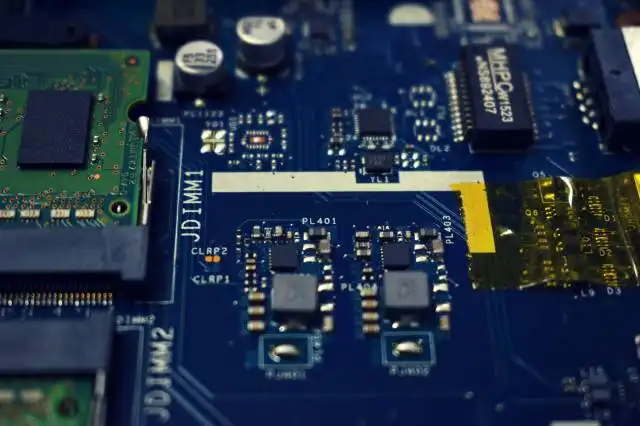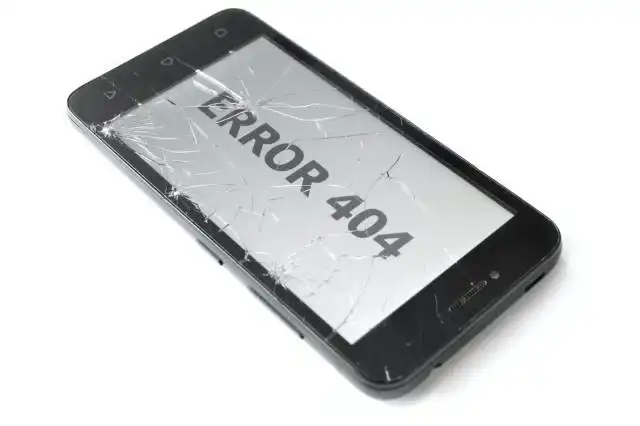Start a Tech Refurbisher Business
Breathing New Life into Used Tech: The Entrepreneurial Power of a Tech Refurbisher Business
| Updated


TECH REFURBISHER BUSINESS
Step into the booming tech industry with a twist - a Tech Refurbisher business! It's like giving old tech gadgets a new lease on life, showing them TLC before setting them back into the wild. Interestingly, this business is much like a beauty salon for tired, worn-out gadgets; you scrub off the dust, polish off the dullness, and voila - they're attractive, fully-functioning computers, laptops, or smartphones again! As a tech refurbisher, you'll be buying used tech, renewing its vigor, and reselling it in the market. It's an eco-friendly and economic entry point to the tech world!
Jump to Business Plan
RELATED BUSINESS IDEAS
Browse ALL Internet & Technology Startups Business Ideas
Discover Your Perfect Domain
Unlock the door to your online success with our hand-picked selection of premium domain names. Whether you're starting a new venture or rebranding an existing one, the right domain can set the tone for your digital presence. Browse through our curated list, each with its unique potential to enhance your brand's visibility and credibility.
TECH REFURBISHER MINI BUSINESS PLAN
This a quick reality check to help you identify the strengths and weaknesses of your business concept before you dive in.
Tech Refurbisher Business
Please note these numbers are based on a tech refurbisher business located in the United States. The exact numbers may vary based on location, market demands, expertise, and other variables.
Expected Percent Margins
- Gross Margin: 40-60%
- Net Profit Margin: 20-30%
Earnings Expectations
- Daily Earnings: $150-$400
- Weekly Earnings: $750-$2,000
- Monthly Earnings: $3,000-$8,000
- Annual Earnings: $36,000-$96,000
Actions to Hit Those Numbers
Sourcing and Refurbishing Devices
- Device Acquisition: Visit auctions, thrift stores, place online ads, etc. to source used tech devices.
- Equipment & Tools: Invest in high-quality repair tools and testing hardware/software.
Sales Channels
- Offline/Local Sales: Establish a physical storefront if possible.
- Online Sales: Utilize online marketplaces such as eBay, Craigslist, and Facebook Marketplace.
Marketing
- Word of Mouth: Provide excellent customer service to encourage referrals.
- Online Advertising: Advertise online to expand your customer base.
Staffing
- Hiring: Hire trained technicians for refurbishing tasks.
- Training: Invest in continuous staff training for handling advanced devices.
Costs
- Rent: Choose a cost-effective working space depending on your scale of operations.
- Utilities and Maintenance: Account for utilities costs in your overall budget.
Business Operations
- Working Hours: Open 5-6 days a week ensuring to maintain a reasonable workload.
- Transaction Volume: Aim to refurbish and sell at least 2-8 devices per day depending on the device complexity.
This is just a template for understanding. The actual numbers may vary based on many market factors, location, and individual business management skills. Therefore, a personalized and detailed business plan is always recommended.
NOT WHAT YOU HAD IN MIND? Here are more ideas



Browse ALL Internet & Technology Startups Business Ideas
Grab Your Business Website Name
Before you get caught up in the whirlwind of setting up your business, invest in a domain name. It's a small but significant step that lays the foundation for your brand and makes it easier for customers to find and trust you. Just like you wouldn't build a house without securing the land first, don't build a business without securing your domain name.
"Why? Can't that wait?" Here's why it shouldn't
Step 1: Determine if the Business is Right Endeavor
Breakdown of Startup Expenses
Before starting a tech refurbisher business, it is important to understand the startup costs associated with the venture. These can include the cost of equipment, such as computers, laptops, and other electronics, as well as the cost of any necessary software and licenses. Additionally, the cost of any necessary certifications, such as a business license, should be taken into consideration. It is also important to factor in the cost of any necessary insurance, as well as the cost of any necessary marketing materials. Finally, the cost of any necessary office space should be taken into account.
Breakdown of Ongoing Expenses
Once the business is up and running, there are a number of ongoing expenses to consider. These can include the cost of any necessary repairs or upgrades to the equipment, as well as the cost of any necessary software updates. Additionally, the cost of any necessary supplies, such as cleaning supplies and tools, should be taken into consideration. It is also important to factor in the cost of any necessary insurance, as well as the cost of any necessary marketing materials. Finally, the cost of any necessary office space should be taken into account.
Examples on Ways to Make Money
There are a number of ways to make money with a tech refurbisher business. One way is to purchase used electronics and refurbish them for resale. This can include computers, laptops, tablets, and other electronics. Additionally, the business can offer repair services for customers who need their electronics fixed. Finally, the business can offer consulting services to customers who need help setting up their electronics or troubleshooting any issues they may have.
Step 2: Name the Business
When deciding what to name the business, it is important to consider the type of business, the target market, and the goals of the business. The name should be memorable, easy to pronounce, and easy to spell. It should also be unique and not too similar to other businesses in the same industry. Additionally, it is important to consider if the name can be used as a domain name and if it is available for trademark registration.
When brainstorming potential names, it is important to consider the type of business and the target market. For example, if the business is a tech refurbisher, the name should reflect the type of services offered. Additionally, it is important to consider the target market. For example, if the business is targeting a younger demographic, the name should be more modern and hip.
It is also important to consider the goals of the business. For example, if the goal is to become a leader in the tech refurbishing industry, the name should reflect that. Additionally, the name should be memorable and easy to pronounce. This will make it easier for customers to remember and find the business.
Finally, it is important to consider if the name can be used as a domain name and if it is available for trademark registration. This will ensure that the name is not already in use by another business and that the business can protect its name. Additionally, it is important to make sure that the name is not too similar to other businesses in the same industry. This will help the business stand out and avoid confusion.
Step 3: Obtain Necessary Licenses and Permits
The third step in starting a tech refurbisher business is to obtain the necessary licenses and permits. Depending on the location of the business, there may be a variety of licenses and permits that need to be obtained. For example, a business may need to register with the local government, obtain a business license, or obtain a sales tax permit. Additionally, the business may need to obtain any necessary permits for the storage and disposal of hazardous materials. It is important to research the specific requirements for the area in which the business is located, as the laws and regulations may vary from place to place.
Furthermore, the business may need to obtain a license to resell products. This may require the business to register with the manufacturer of the products they are selling, as well as any other applicable organizations. Additionally, the business may need to obtain a license to repair or refurbish products. This may require the business to obtain a certification from the manufacturer of the products they are repairing. It is important to research the specific requirements for the area in which the business is located, as the laws and regulations may vary from place to place.
In addition to the licenses and permits required by the local government, the business may need to obtain additional insurance. This may include general liability insurance, product liability insurance, and property insurance. Additionally, the business may need to obtain workers’ compensation insurance, if they plan to hire any employees. It is important to research the specific requirements for the area in which the business is located, as the laws and regulations may vary from place to place.
Finally, it is important to keep all of the necessary licenses and permits up to date. This may require the business to renew their licenses and permits on a regular basis. Additionally, the business may need to update their insurance policies as their business grows and changes. It is important to research the specific requirements for the area in which the business is located, as the laws and regulations may vary from place to place.
Step 4: Create a Business Plan
Creating a business plan is an essential step for any business, and a tech refurbisher business is no exception. A business plan should include a description of the business, the products or services offered, the target market, the competitive landscape, and a financial plan. It should also include a mission statement, a marketing plan, and a description of the management team. When writing the business plan, it is important to be realistic and honest about the potential success of the business. The business plan should also include a timeline for when the business will be up and running. Additionally, it should include a budget for startup costs, such as equipment, supplies, and marketing materials. Finally, the business plan should include a plan for how the business will generate revenue. This could include selling refurbished electronics, offering repair services, or selling parts.
Step 5: Secure Funding
Securing funding for a tech refurbisher business is an important step in the process. There are several ways to do this, including applying for a loan, seeking out investors, or using personal savings. It is important to research the different options available and determine which one is the best fit for the business.
When applying for a loan, it is important to have a business plan in place that outlines the goals and objectives of the business. This should include a detailed budget that outlines startup costs, ongoing expenses, and projected income. Additionally, it is important to have a good credit score and a solid track record of success in order to qualify for a loan.
Investors can be a great source of funding for a tech refurbisher business. It is important to have a solid business plan in place that outlines the goals and objectives of the business. Additionally, it is important to have a good understanding of the market and the potential for growth. Investors will want to know the potential return on their investment and how the business will make money.
Using personal savings is another option for funding a tech refurbisher business. This is a great way to get the business off the ground without taking on debt or giving away equity. However, it is important to make sure that the business is financially viable before using personal savings. It is also important to make sure that the business has enough capital to cover startup costs and ongoing expenses.
Step 6: Find a Location
Finding a suitable location for a tech refurbisher business is an important step. It should be a place that is easily accessible to customers, and that has enough space to store inventory and conduct repairs. It should also be a place that is zoned for the type of business that is being conducted. Additionally, the location should have access to the necessary utilities, such as electricity and internet, to run the business. It is also important to consider the cost of the location, as this will be an ongoing expense. Consider the cost of rent, utilities, and any other fees associated with the location. It is also important to consider the safety of the location, as it will be storing valuable items. Make sure the location is secure and has the necessary safety features, such as security cameras and alarms. Finally, consider the local competition when choosing a location. It is important to choose a location that will give the business an advantage over the competition.
Step 7: Purchase Necessary Equipment
Once you have determined the type of refurbishing business you want to start, you will need to purchase the necessary equipment. This will include computers, laptops, tablets, and other electronic devices. You will also need to purchase tools and supplies such as screwdrivers, soldering irons, and other repair tools. Additionally, you will need to purchase any software that you will need to run your business, such as accounting software and customer relationship management (CRM) software. You may also need to purchase a printer, scanner, and other office equipment. Make sure to research the best prices for the equipment you need and shop around for the best deals. Additionally, you may want to consider leasing or renting equipment instead of purchasing it outright. This can help you save money in the long run.
Step 8: Market the Business
Once the business is up and running, it is important to market the business to potential customers. This can be done through a variety of methods, such as creating a website, utilizing social media, and advertising in local newspapers and magazines. It is also important to create a strong presence in the local community, as word of mouth can be a powerful marketing tool. Additionally, it is important to create relationships with local businesses and organizations that may be interested in the services offered by the tech refurbisher business. This could include schools, libraries, and other organizations that may need tech refurbishing services. It is also important to create a strong online presence, as this can help to reach a larger audience and potential customers. Additionally, it is important to create a strong customer service policy, as this can help to ensure customer satisfaction and loyalty.
Step 9: Hire Employees
The final step in starting a tech refurbisher business is to hire employees. This is an important step, as it will determine the success of the business. It is important to hire employees who are knowledgeable and experienced in the tech industry, as they will be responsible for the quality of the refurbished products. Additionally, it is important to hire employees who are passionate about the business and its mission. This will ensure that the employees are motivated and dedicated to the success of the business.
When hiring employees, it is important to consider the cost of salaries and benefits. It is also important to consider the legal requirements of hiring employees, such as obtaining the necessary paperwork and paying taxes. Additionally, it is important to consider the type of environment that the employees will be working in. This includes the safety of the workplace and the availability of resources. Finally, it is important to consider the company culture and values, as this will help to ensure that the employees are a good fit for the business.
EXPLORE MORE CATEGORIES
Browse ALL Business Idea Categories
TAKE THE NEXT STEPS









